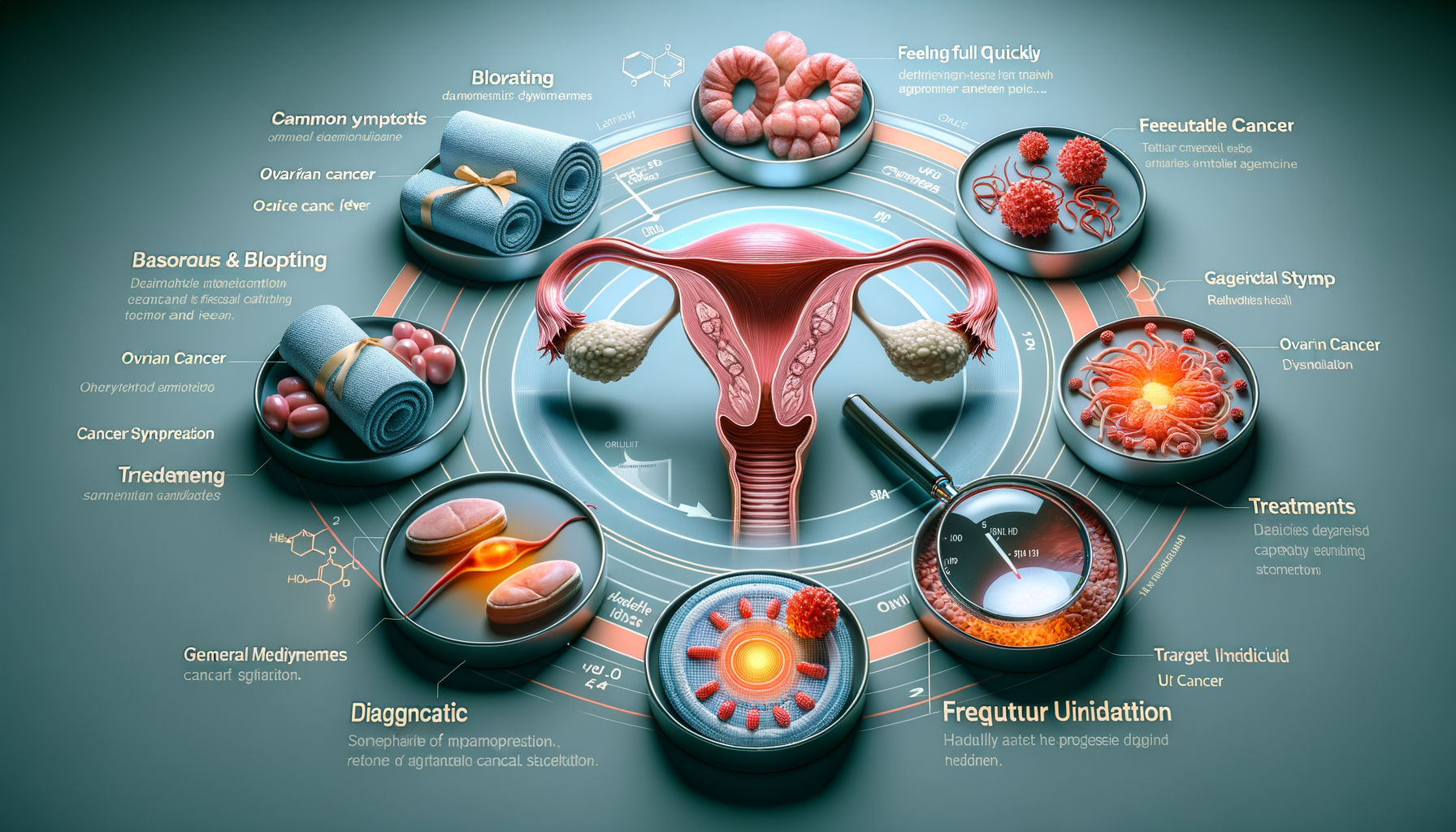Introduction to Ovarian Cancer
Ovarian cancer is a significant health concern for women worldwide, often referred to as a “silent killer” due to its subtle symptoms that can be easily overlooked. Understanding the signs, diagnostic processes, and treatment options is crucial for early detection and effective management. This article delves into the symptoms of ovarian cancer, how it is diagnosed and staged, and the various treatment options available depending on the type and progression of the disease.
Signs and Symptoms of Ovarian Cancer
Recognizing the early signs of ovarian cancer can be challenging, but certain symptoms should prompt further investigation. Here are four key signs and symptoms:
- Abdominal Bloating: Persistent bloating that doesn’t go away with dietary changes can be an early sign of ovarian cancer. It is often accompanied by a feeling of fullness even after consuming small meals.
- Pelvic or Abdominal Pain: Unexplained pain in the pelvic or abdominal area is another symptom that should not be ignored. This pain may be intermittent or constant, varying in intensity.
- Changes in Bowel Habits: Ovarian cancer can cause changes in bowel habits, including constipation or diarrhea. These changes may occur alongside other digestive issues such as nausea or indigestion.
- Frequent Urination: An increased need to urinate or feeling of urgency, even when the bladder is not full, can be a sign of ovarian cancer. This symptom is often mistaken for urinary tract infections.
It’s important to note that these symptoms can be associated with other benign conditions. However, if they persist for several weeks, consulting a healthcare professional is essential for further evaluation.
Diagnosis and Staging of Ovarian Cancer
Diagnosing ovarian cancer typically involves a combination of physical examinations, imaging tests, and laboratory tests. Here’s how the process generally unfolds:
- Pelvic Examination: A thorough pelvic examination can help detect abnormalities in the reproductive organs.
- Imaging Tests: Ultrasound, CT scans, and MRI are commonly used to visualize the ovaries and detect any masses or irregularities.
- Blood Tests: The CA-125 blood test measures the level of a protein that is often elevated in women with ovarian cancer.
- Biopsy: If a mass is detected, a biopsy may be performed to confirm the presence of cancer cells.
Once diagnosed, staging is crucial to determine the extent of the cancer and plan appropriate treatment. Staging ranges from Stage I (cancer confined to the ovaries) to Stage IV (cancer has spread to distant organs). Each stage provides critical information about the prognosis and treatment strategy.
Treatment Options Based on Cancer Type and Progression
Treatment for ovarian cancer depends on the type and stage of the disease. Here are some common treatment options:
- Surgery: Surgery is often the first line of treatment, aiming to remove as much of the cancer as possible. This may involve removing one or both ovaries, the uterus, and surrounding tissues.
- Chemotherapy: Chemotherapy uses drugs to kill cancer cells or stop them from growing. It is typically administered after surgery to target any remaining cancer cells.
- Targeted Therapy: This treatment focuses on specific molecules involved in cancer growth. It can be used alone or in combination with other treatments.
- Radiation Therapy: Although less common for ovarian cancer, radiation therapy may be used in certain cases to shrink tumors or relieve symptoms.
The choice of treatment depends on several factors, including the patient’s overall health, the cancer’s stage, and whether the cancer has recurred. A personalized treatment plan is crucial for achieving the best possible outcome.
Conclusion: Awareness and Early Detection
Ovarian cancer remains a challenging disease due to its subtle symptoms and late-stage diagnosis. However, awareness of its signs and symptoms, along with advances in diagnostic and treatment options, can improve outcomes for many women. Regular check-ups and prompt attention to unusual symptoms are vital for early detection. By staying informed and proactive, women can significantly impact their health outcomes and quality of life.




Leave a Reply